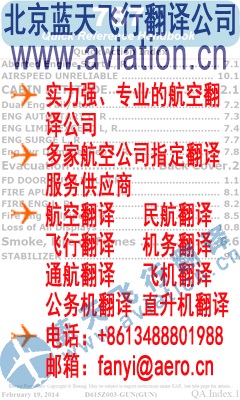CIVIL AVIATION AUTHORITY
CIVIL AVIATION ADVISORY PUBLICATION
Date: July 1992
No: 92-1(1)
SUBJECT: GUIDELINES FOR AEROPLANE LANDING AREAS
IMPORTANT The information in this publication is advisory only. There is no legal requirement to observe the details set out in this publication. The Civil Aviation Regulations set out the legal requirements that must be complied with in relation to the subject matter of this publication. There may be a number of ways of ensuring that the requirements of the Civil Aviation Regulations are met. This publication sets out methods that may be used and which experience has shown should, in the majority of cases, ensure compliance with the Regulations. However, before using the information in this publication the user should always read the Civil Aviation Regulations listed in the reference section below to ensure that he or she complies with the legal obligations of the Regulations. PURPOSE Civil Aviation Regulation 92 (1) states that: “An aircraft shall not land at, or take-off from, any place unless: ...(d) the place....is suitable for use as an aerodrome for the purposes of the landing and taking-off of aircraft; and, having regard to all the circumstances of the proposed landing or take-off (including the prevailing weather conditions), the aircraft can land at, or take-off from, the place in safety.” Regulation 92 (1) does not specify the method of determining which “circumstances”, other than the prevailing weather conditions, should be considered in any particular case. These matters are the responsibility of the pilot -1in command and, in some circumstances, are shared with the aircraft operator. These guidelines set out factors that may be used to determine the suitability of a place for the landing and taking-off of aeroplanes. Experience has shown that, in most cases, application of these guidelines will enable a take-off or landing to be completed safely, provided that the pilot in command: (a) has sound piloting skills; and (b) displays sound airmanship. CANCELLATION This is the second issue of CAAP 92-1, and supersedes CAAP 92-1(0). REFERENCES This publication should be read in conjunction with: Civil Aviation Regulations 92 (1), 93, 233 and 235; Civil Aviation Orders; and the Aeronautical Information Publication. HOW TO OBTAIN COPIES OF THIS PUBLICATION Copies of this publication may be obtained from: Civil Aviation Authority Publications Centre 607 Swanston Street Carlton Victoria 3053 Telephone (008) 331676 (008) 334191 (03) 342 2000 CONTENTS 1 Definitions
p2
飞行翻译公司 www.aviation.cn 本文链接地址:RMIT飞行训练课件 14.短跑道着陆 GUIDELINES FOR AEROPLANE LANDING AREAS.pdf
CIVIL AVIATION ADVISORY PUBLICATION
Date: July 1992
No: 92-1(1)
SUBJECT: GUIDELINES FOR AEROPLANE LANDING AREAS
IMPORTANT The information in this publication is advisory only. There is no legal requirement to observe the details set out in this publication. The Civil Aviation Regulations set out the legal requirements that must be complied with in relation to the subject matter of this publication. There may be a number of ways of ensuring that the requirements of the Civil Aviation Regulations are met. This publication sets out methods that may be used and which experience has shown should, in the majority of cases, ensure compliance with the Regulations. However, before using the information in this publication the user should always read the Civil Aviation Regulations listed in the reference section below to ensure that he or she complies with the legal obligations of the Regulations. PURPOSE Civil Aviation Regulation 92 (1) states that: “An aircraft shall not land at, or take-off from, any place unless: ...(d) the place....is suitable for use as an aerodrome for the purposes of the landing and taking-off of aircraft; and, having regard to all the circumstances of the proposed landing or take-off (including the prevailing weather conditions), the aircraft can land at, or take-off from, the place in safety.” Regulation 92 (1) does not specify the method of determining which “circumstances”, other than the prevailing weather conditions, should be considered in any particular case. These matters are the responsibility of the pilot -1in command and, in some circumstances, are shared with the aircraft operator. These guidelines set out factors that may be used to determine the suitability of a place for the landing and taking-off of aeroplanes. Experience has shown that, in most cases, application of these guidelines will enable a take-off or landing to be completed safely, provided that the pilot in command: (a) has sound piloting skills; and (b) displays sound airmanship. CANCELLATION This is the second issue of CAAP 92-1, and supersedes CAAP 92-1(0). REFERENCES This publication should be read in conjunction with: Civil Aviation Regulations 92 (1), 93, 233 and 235; Civil Aviation Orders; and the Aeronautical Information Publication. HOW TO OBTAIN COPIES OF THIS PUBLICATION Copies of this publication may be obtained from: Civil Aviation Authority Publications Centre 607 Swanston Street Carlton Victoria 3053 Telephone (008) 331676 (008) 334191 (03) 342 2000 CONTENTS 1 Definitions
p2
飞行翻译公司 www.aviation.cn 本文链接地址:RMIT飞行训练课件 14.短跑道着陆 GUIDELINES FOR AEROPLANE LANDING AREAS.pdf



